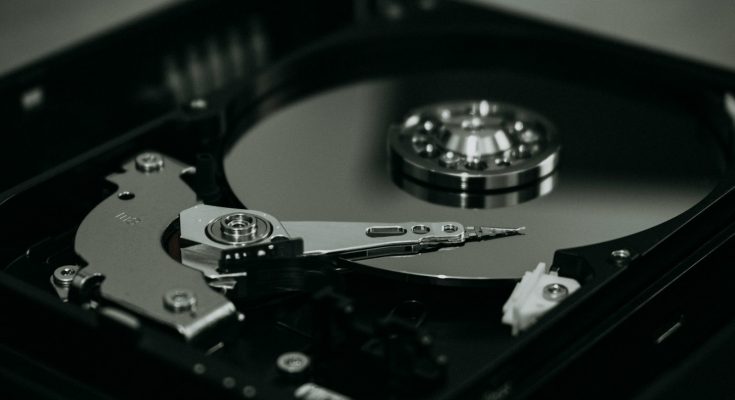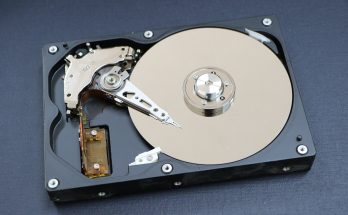Data loss can be scary. It can happen to anyone. If your hard drive is damaged, it can feel hopeless. But don’t worry! You can recover your data. This guide will help you understand how to recover data from a damaged platter.
Understanding Hard Drives and Platters
To start, let’s talk about hard drives. A hard drive is a device that stores your data. It has many parts. One of the most important parts is the platter. Platters are round disks inside the hard drive. They hold your files, pictures, and everything else you save.
When a platter gets damaged, it can stop working. This damage can happen for many reasons. Sometimes, it can be physical damage.
This means something broke or hit the hard drive. Other times, it can be logical damage. This means the data is corrupted but the platter looks fine.
Signs of a Damaged Platter
So, how do you know if your platter is damaged? There are some signs to look for. First, listen for strange noises. If you hear clicking or grinding sounds, this could mean trouble.
Second, if your computer is very slow, this can be a sign. Finally, if you can’t open files or if they are missing, your platter might be damaged.
If you notice these signs, don’t panic. It’s important to act quickly. The sooner you try to recover your data, the better your chances are.
Risks of DIY Recovery
You may think about trying to fix the problem yourself. But, this can be risky. Many people make mistakes when they try to recover data. If you open the hard drive without the right tools, you might cause more damage.
Also, using the wrong software can lead to losing your data forever. So, it’s best to think carefully before trying to recover data on your own. Professional help can be worth the cost. They have the right tools and skills to do it safely.
Step-by-Step Guide to Recovering Data
Now, let’s go through the steps to recover your data from a damaged platter.
Step 1: Assess the Damage
First, you need to see how bad the damage is. You can start by checking if the hard drive is detected by your computer. If it is not detected, this could mean serious damage.
Use a tool like CrystalDiskInfo. This tool checks the health of your hard drive. It can show you if there are any errors. If you find errors, make a note of them. This will help you understand what to do next.
Step 2: Create a Backup
Before you do anything else, make a backup if possible. If your hard drive is still working, try to save important files. Use an external hard drive or a USB flash drive. Copy your files over. This way, you won’t lose them during recovery.
If your hard drive fails completely, you might not be able to get any data back. So, always have a backup plan in place.
Step 3: Use Recovery Software
If you can’t access your files, you can try recovery software. There are many options available. Some popular ones are Recuva, EaseUS Data Recovery Wizard, and MiniTool Power Data Recovery.
Here’s how to use recovery software:
- Download the Software: Go to the website of the software you chose and download it.
- Install the Software: Follow the instructions to install it on your computer. Make sure to install it on a different drive than the damaged one.
- Run the Software: Open the software and select the damaged hard drive.
- Scan for Files: The software will scan the hard drive for recoverable files. This can take some time.
- Review the Results: Once the scan is done, look at the files it found. You may see many files.
- Recover Your Files: Select the files you want to recover and choose “Recover.” Save them to a different drive.
Using recovery software can be a great way to get your data back. But remember, it doesn’t always work. If the platter is too damaged, you might still lose some files.
Professional Data Recovery Services
If you can’t recover the data yourself, it might be time to call in the pros. Professional data recovery services can help. They have special tools and clean rooms to fix hard drives.
When you contact a service, they will ask questions about the problem. They might want to know how the drive got damaged. This information helps them understand what to do.
The cost of professional recovery can vary. Some services charge a flat fee, while others charge based on the work needed. It’s a good idea to get a quote before you agree to anything.
Expect the recovery to take some time. Depending on the damage, it can take a few days to several weeks. Being patient is important.
Prevention Tips for Future Data Loss
It’s always better to prevent problems than to fix them after they happen. Here are some tips to help you avoid future data loss:
- Back Up Your Data Regularly: Use an external hard drive or cloud storage to keep your files safe.
- Keep Your Computer Clean: Dust and dirt can cause damage. Clean your computer often.
- Monitor Your Hard Drive Health: Use tools to check the health of your hard drive regularly. This can help you catch problems early.
- Be Careful with Your Computer: Avoid dropping or hitting your computer. Handle it gently.
By following these tips, you can help protect your data.
Conclusion
Recovering data from a damaged platter can be tough. But with the right steps, you can get your information back. Always assess the damage first.
If you can, make a backup. Use recovery software if necessary. And don’t hesitate to seek professional help if you need it.
Remember, prevention is key. Taking care of your hard drive can save you a lot of trouble in the future. Stay safe and keep your data protected!
FAQs
Q1: Can I recover data from a damaged platter myself?
A1: You can try, but it’s risky. Using the wrong methods may cause more damage.
Q2: How much does professional data recovery cost?
A2: It varies widely, usually between $100 to $1000 or more, based on the damage.
Q3: How can I prevent data loss in the future?
A3: Regular backups, keeping your devices clean, and monitoring hard drive health can help.



